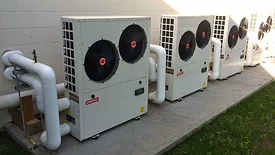Articles by John Siegenthaler, P.E.
Renewable Heating Design | John Siegenthaler
Expanded possibilities
Read More
Hydronics Workshop | John Siegenthaler
There are still viable applications for solar thermal technology
Sōl Survivor
August 31, 2023
Renewable Heating Design | John Siegenthaler
Using “reverser valves” to switch buffer tanks between heating and cooling
Tank flipping
August 1, 2023
Hydronics Workshop | John Siegenthaler
Relays and switches — part two
Building the brains for custom hydronics systems.
August 1, 2023
Column | John Siegenthaler
John Siegenthaler: Understanding thermal equilibrium and hydraulic equilibrium
Hydronic certainties
July 3, 2023
Column | John Siegenthaler
John Siegenthaler: Relays and switches — part one
The basics.
July 3, 2023
John Siegenthaler: Performance metrics for modern hydronic heating and cooling sources
Abundant acronyms
June 1, 2023
John Siegenthaler: Extended manifold systems
Less tubing, less drilling, less fastening.
June 1, 2023
John Siegenthaler: Eyes for a heat pump — part two
Variable-speed heat pumps allow a better match between the rate of heat production and the rate of heat dissipation by the load.
May 1, 2023
Keep your content unclogged with our newsletters!
Stay in the know on the latest plumbing & piping industry trends.
JOIN TODAY!Copyright ©2025. All Rights Reserved BNP Media.
Design, CMS, Hosting & Web Development :: ePublishing











